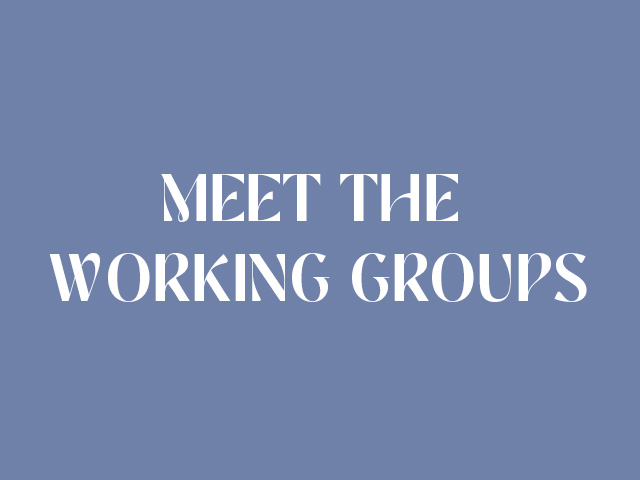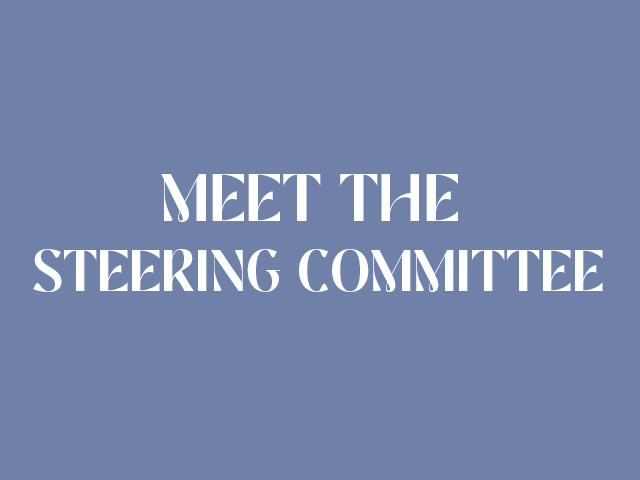WHY THE FOUNDERS MONUMENT?
The Friends of the Public Garden selected the Founders Monument on Boston Common to pilot a creative intervention that would reveal deeper histories and bring unheard voices to life. A favorite monument for tourists and city residents alike, the Founders Monument seems to tell a simple story of the founding of Boston by white English settlers.
We invite/encourage you to rethink this story.
This pilot project/performance centers Indigenous histories and understandings of the land on the Shawmut Peninsula. Focusing on ideas of reciprocity and exchange rather than land ownership, Revealing a Deeper History: Intervention at the Founders Monument asks you to think about Indigenous life on the land prior to colonial encounter and settlement.

FOUNDERS MONUMENT
Boston Common
Whose story is being told in the Founders Memorial?
Who are the main characters in the scene?
What is this monument celebrating?
What is absent from the story?
How is the land presented?
The Founders Monument was created for Boston’s Tricentennial Celebration in 1930. It was one of 58 plaques of various scales created to acknowledge historical sites of importance to the founding of Boston. Unveiled on September 16, 1930, the memorial took the form of a granite fountain with a bas-relief narrative panel in bronze set on its south face, and a dedicatory inscription on its north side on Beacon Street. Contained within the massive granite frame, the bronze bas relief details the meeting of William Blaxton (1595-1675) with John Winthrop (1588-1649), the first governor of Massachusetts, on Shawmut peninsula.
Much of what we know about the Founders Monument can be found in the volume, The Tercentenary of the Founding of Boston 1630-1930. The frontispiece of the book is a black-and-white photograph of the bronze relief, and the text includes a full description of the monument and transcripts of the dedication speeches made by the governor of Massachusetts, the mayor of Boston, and secretary of the United States Navy. Designed by the sculptor John Francis Paramino (1888/89-1956), the fountain was said to symbolize that “clear water will ever flow in memory of those who three hundred years ago made possible the founding of Boston.” The commissioners of the monument asserted that its location on the Common was important because it was near the former site of Blaxton’s home and a fresh water spring that provided clean water to the settlers.
The scene concentrates on the moment that Blaxton and Winthrop exchange “ownership” of the land that would become Boston with the men reaching out to shake/touch hands. Set within the imagined natural landscape of Shawmut peninsula, Blaxton stands to the left with two Native American men who witness the exchange but are not participants in the unfolding drama. The central white figures are arranged in descending order as they recede into the background towards the water and to the men who are hauling two row boats to shore.
Behind Winthrop stands the Reverend John Wilson (1588-1667), a Puritan clergyman who carries a bible under his right arm, and Ann Pollard (1621-1725), the first white woman to have been said to set foot on the Shawmut peninsula. Besides the two row boats, the ship Arabella is anchored in the Charles River; in the background the buildings of Charlestown are suggested; to the left we see a topographical outline of the land that would become Cambridge. The entire scene asserts a friendly exchange of land ownership between two white settlers.
Two groups of figures and trees on either side of the bas-relief frame and contain the composition. On the left, two male members of the Algonquin, according to the artist, are included standing and sitting under the branches of an oak tree. Paramino modeled one figure in a simple loin cloth and long braid with his back to us. The second figure sits on the ground with bended knee and wears a bear-tooth necklace against his bare chest. We are to understand these two men as witnesses to the peaceful exchange of the land they once inhabited. To the right, a soldier and young Puritan woman stand under a pine tree. These allegorical figures “symbolize the motherhood of Boston and the military spirit which was necessary for guarding and protecting the interests of the new colony.” These symbolic images focus on English notions of right ownership.
The sculptor modeled the white settlers in period-appropriate clothing, including the recognizable ruff and tall-crowned capotain hats of the Puritans. Intentionally, Paramino created a visual distinction between the clothed civilized white settlers and the semi-unclothed “natural” Native Americans. The Indigenous men represent a type: the myth of the “Vanishing Indian,” noble and brave yet destined to extinction, sacrificing the land for the greater good of democracy and white settlement.
Paramino created his bas-relief during a renewed interest in the American colonial period, including a reassertion of Boston as central to the founding of the democratic nation. From 1880-1940, the Colonial Revival Movement—with an emphas is on Georgian and Neoclassical styles—flourished in architecture, art, garden design, and decorative arts. Promoters of the colonial revival sought “to advance notions of patriotism, good taste, moral superiority, family life, democracy, and the simple life (Colonial Revival in America).” The Founders Monument underscores these aspects through a visual image of the moral uprightness of the male founders as upholders of the simple Christian life, and therefore rightful owners of land that is not theirs to take. From the 1930s onward, Paramino’s granite fountain set with the bronze bas-relief has served as the symbolic marker of Boston’s founding.
MEMORIAL TO MONUMENT
At the time of its dedication in 1930, the Founders Monument was known as the Memorial to the Founders or the Founders Memorial. In the twenty-first century, we have chosen to use the term monument rather than memorial.
Why the switch from memorial to monument?
Memorials are associated with acknowledging and paying tribute to the dead, and with ongoing activities related to the expression of grief and mourning. People come to memorials to remember the deceased often in the context of religious holidays, designated memorial days, and acknowledgment days related to individuals and historic moments.
In contrast, monuments mark specific events, persons, and actions as worthy of remembrance. They often demonstrate power and authority, and assert abstract values perceived as universal (for example, the ideals of freedom). They educate us about past events, persons, and actions singled out as important. Monuments are built with materials that are long-lasting such as bronze, steel, granite, and marble. Created to signify a sense of permanence, monuments honor some noteworthy aspect of the past.
The Founders Monument instructs us to a specific historic event thought to be worthy of remembrance in public space. The monument distills a complicated historical moment to a symbolic handshake. Made of granite and bronze, the monument is meant to be enduring and to assert abstract values such as cooperation and peaceful coexistence. It says “this moment was important to the city’s history and to the nation’s founding.”
DESCRIPTION OF THE FOUNDERS MONUMENT
from The Tercentenary of the Founding of Boston
“It is this first meeting of the pioneer settlers with Governor Winthrop that has been immortalized in bronze in this panel, which is twelve feet four inches wide and five feet five inches high. In the immediate foreground, in high relief, is shown the group, consisting of Blaxton on the left, touching hands with Governor Winthrop. Behind the Governor stands Rev. John Wilson, with the Bible under his right arm. Beside the clergyman is the little Puritan maid, Ann Pollard, first of her sex to set foot on the shores of Boston.”
“A little back of this group boatmen are hauling up on the beach the two rowboats in which the Governor and his party had been borne across the river from Charlestown. Out in the stream the “Arbella” rides at anchor, her sails partly furled. Beyond this group, in the immediate foreground, stands a fine-looking young woman protected by a Puritan soldier, helmeted and bearing a spear. These two figures symbolize the motherhood of Boston and the military spirit which was necessary for guarding and protecting the interests of the new colony.”
“On the extreme left is a group of friendly Algonquin Indians who had accompanied Blaxton to the spot of welcome. These symbolize the friendship and helpfulness of these Indians toward the early settlers. These Indians did not wear the feathered headdress characteristic of the western aborigines. Beyond Charlestown, and extending to the left, across the water, may be seen, in slight relief, a topographical outline of the area which later became known as Cambridge. Above the Indians are the branches of an oak tree. Branches of a pine tree sheltered the woman soldier. The historical accuracy of the scene is preserved even in the marsh grass on the shore. This is the first real memorial of an enduring character, erected to William Blaxton, the pioneer, and the first Puritan settlers of Boston. The bronze is beautifully modeled, sharp and distinct in outline as well as artistic in every detail.”
BIBLIOGRAPHY
Colonial Revival in America: Annotated Bibliography, University of Virginia Library. Accessed July 26, 2024, https://colonialrevival.lib.virginia.edu/.
The Colonial Revival Movement at George Washington Birthplace, National Park Service. Accessed July 26, 2024, https://www.nps.gov/articles/000/sparking-a-movement.htm.
Curley, James, comp. Tercentenary of the Founding of Boston: An Account of the Celebration Marking the Three Hundredth Anniversary of the Settlement of the Site of the City of Boston, Massachusetts. Boston: Committee on Compilation of the Tercentenary Celebration, 1930. Accessed July 26, 2024, https://archive.org/details/tercentenaryoffo00bost/page/n11/mode/2up.
Theobold, Mary Miley. “The Colonial Revival: The Past That Never Dies.” Colonial Williamsburg Journal (Summer 2002). Accessed July 26, 2024,
https://research.colonialwilliamsburg.org/Foundation/journal/Summer02/revival.cfm.



